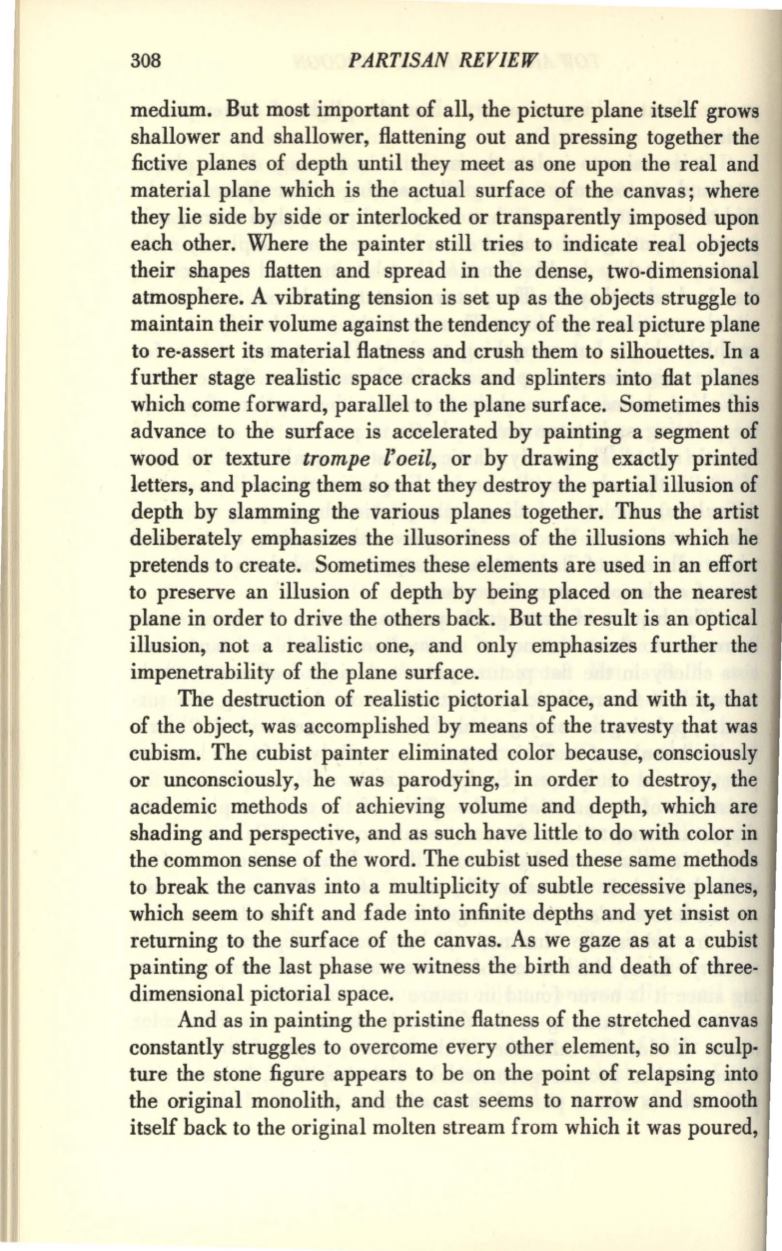
308
PARTISAN REVIEW
medium. But most important of all, the picture plane itself grows
shallower and shallower, flattening out and pressing together the
fictive planes of depth until they meet as one upon the real and
material plane which is the actual surface of the canvas; where
they lie side by side or interlocked or transparently imposed upon
each other. Where the painter still tries to indicate real objects
their shapes flatten and spread in the dense, two-dimensional
atmosphere. A vibrating tension is set up as the objects struggle to
maintain their volume against the tendency of the real picture plane
to re-assert its material flatness and crush them to silhouettes. In a
further stage realistic space cracks and splinters into flat planes
which come forward, parallel to the plane surface. Sometimes this
advance to the surface is accelerated by painting a segment of
wood or texture
trompe l'oeil,
or by drawing exactly printed
letters, and placing them so that they destroy the partial illusion of
depth by slamming the various planes together. Thus the artist
deliberately emphasizes the illusoriness of the illusions which he
pretends to create. Sometimes these elements are used in an effort
to preserve an illusion of depth by being placed on the nearest
plane in order to drive the others back. But the result is an optical
illusion, not a realistic one, and only emphasizes further the
impenetrability of the plane surface.
The destruction of realistic pictorial space, and with it, that
of the object, was accomplished by means of the travesty that was
cubism. The cubist painter eliminated color because, consciously
or unconsciously, he was parodying, in order to destroy, the
academic methods of achieving volume and depth, which are
shading and perspective, and as such have little to do with color in
the common sense of the word. The cubist used these same methods
to break the canvas into a multiplicity of subtle recessive planes,
which seem to shift and fade into infinite depths and yet insist on
returning to the surface of the canvas. As we gaze as at a cubist
painting of the last phase we witness the birth and death of three–
dimensional pictorial space.
And as in painting the pristine flatness of the stretched canvas
constantly struggles to overcome every other element, so in sculp–
ture the stone figure appears to be on the point of relapsing into
the original monolith, and the cast seems to narrow and smooth
itself back to the original molten stream from which it was poured,


